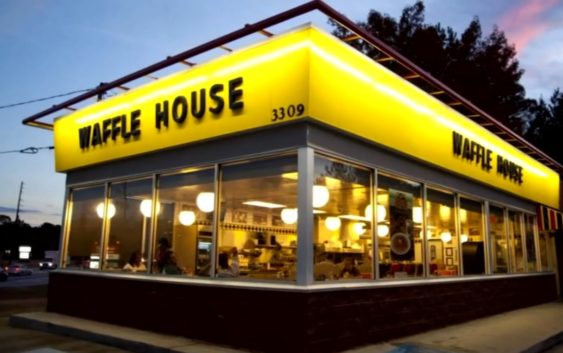- McDowell County wildfire spreads to 500 acres, evacuation orders in place
- Evacuations in Caldwell County due to wildfire
- Northwest Houston 'ghost neighborhood' caused by repeated flooding to become latest detention basin
- NHL playoffs: Hurricanes open playoffs Easter Sunday afternoon vs. Devils
- 2 wildfires spreading in rugged terrain in western North Carolina
Waffle House hurricane index: How restaurant works with FEMA during disasters

WASHINGTON — When it comes to disaster relief, FEMA has an unlikely ally: Waffle House.
Before, during and after a natural disaster, like Hurricane Ian, the agency looks to private-sector partners like Waffle House to determine how businesses are faring in the impacted areas. If Waffle House restaurants (which are normally open 24/7) are forced to suspend operations in a disaster zone, that’s a good sign that the community could require more robust disaster relief services.
Eleven locations in mandatory evacuation zones in Florida closed ahead of Hurricane Ian.
Former FEMA administrator Craig Fugate said the term came about during Hurricane Charley in 2004.
He was director of Florida’s Division of Emergency Management, and he and his coworkers discovered the last places that stayed open were Waffle Houses.
RELATED: Hurricane Ian strengthens before SC landfall; FL rescues continue as death toll rises
Fugate, who helmed FEMA for eight years, is known for his Waffle House Matrix that has been used internally to gauge how the restaurants are faring: Stores that are open and offering a full menu are green, stores that are open and serving a limited menu are yellow, and stores that are closed are red.
How a business like Waffle House, which boasts its own storm center that it activates when necessary, plans for a natural disaster is not that different from how a government agency would plan for the same event.
“There is logistics planning in staging and getting additional supplies and manpower into an affected area right after a storm, however it’s our show up that sets us apart from other companies,” Waffle House CEO Walt Ehmer wrote in a FEMA blog post about the company’s response to Hurricane Irene. “Our planning gets us ready for the storm and so once it has passed our managers can see what’s going on in the area and respond right after an emergency.”
While Waffle House might be the agency’s most well-known partner, FEMA said in 2017 that it has similar relationships with a variety of other private-sector partners like Target, Walmart, Wegmans, Macy’s, Walgreens, Lowes and Safeway.
Before a storm hits, FEMA works with businesses in a storm’s path as they develop their own relief plans.
“Businesses in communities are often some of the biggest drivers of recovery. If stores can open, people can go back to work. If people can go back to work, they can return to at least one piece of a normal life – and that little piece of normalcy can make a big difference,” FEMA’s Jessica Stapf said of the agency’s response to Hurricanes Harvey and Irma in 2017.